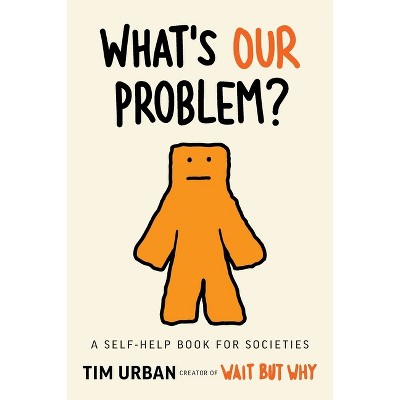Sponsored

Searching for a Self - (Sociology) by Arthur Asa Berger (Paperback)
In Stock
Sponsored
About this item
Highlights
- How do people turn out the way they do?
- Author(s): Arthur Asa Berger
- 194 Pages
- Social Science, Anthropology
- Series Name: Sociology
Description
Book Synopsis
How do people turn out the way they do? How do they "arrive" at themselves and attain an identity? How are our identities affected by our birth order, our hair color, how tall or short we are, our intelligence, our occupation, our race, our religion, our nationality, the socio-economic level of our parents (or our being raised in a single-parent family), where we are born and where we grow up, the language we learn, the way we use language, our fashion tastes, our gender, our education, our psychological makeup, chance experiences we have, the people we marry (if we marry), and countless other factors? There are numerous matters to consider when dealing with identity, which, as Nigel Denis, the author of 'Cards of Identity', reminds us, "is the answer to everything."
'Searching for a Self' takes a deep dive into the question of identity formation from various perspectives; it is written in a reader-friendly accessible style and makes use of insightful quotations from seminal thinkers who have dealt with the topic. Split into two parts, the first "Theories of Identity," offers evaluations of identity from semioticians, psychologists, sociologists and Marxists while the second, "Applications," offers case studies on topics such as Russian identity, Donald Trump's identity, fashion and identity, LGBTQIA+ identity, Orthodox Jewish identity, elite university education and identity, tattoos and identity, travel and identity, and politics and identity. Covering a wide array of subject areas, this book will be a valuable resource for undergraduate students taking courses in identity, sociology, psychology, cultural studies, and other related fields.
Review Quotes
This well-written book provides an interesting and engaging introduction to different perspectives on 'identity'. The book's particular strength is that the author has not tied himself to a particular perspective but offers views and discussions of 'identity' from semiotics, sociology, psychoanalysis, and Marxism, followed by 12 chapters in which he applies and brings these theories to life.
The multi-perspective approach to the topic of 'identity' is original. I have not seen a book like this before that explores identity from so many different angles. The applications discussed in chapters 6 to 17 are drawn from recent events, such as Trump's presidency and the insurgence.
The book will be of great interest to Undergraduate and Graduate students looking for a readable entry into discussions about identity. It also might find a readership outside academia as it covers lots of current affairs and events.
Prof. Dr. Dirk vom Lehn
King's Business School
King's College London
Shipping details
Return details
Frequently bought together

Trending Non-Fiction
















